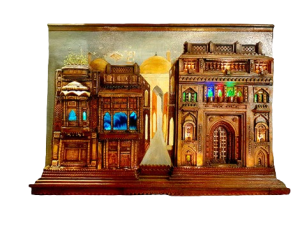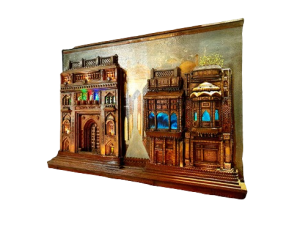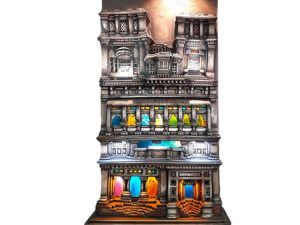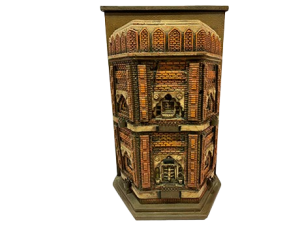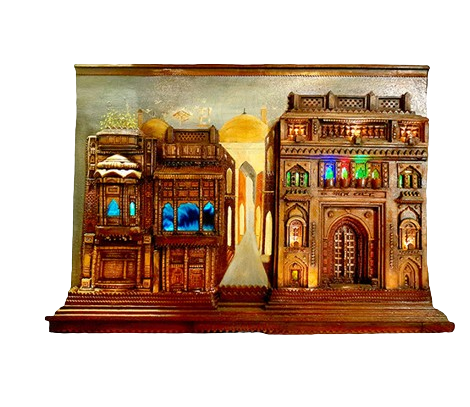
The Mughal art of Pakistan is a rich and distinctive artistic tradition that flourished during the Mughal Empire’s rule over the Indian subcontinent. The Mughal period in South Asia, from the 16th to the 19th centuries, was marked by a fusion of Persian, Central Asian, and indigenous Indian artistic influences. This resulted in a unique blend of styles that produced some of the most exquisite and enduring artworks in the history of the Indian subcontinent.
**Miniature Paintings:**
One of the most iconic aspects of Mughal art in Pakistan is the tradition of miniature paintings. These intricate and detailed artworks, often created on small-scale surfaces, depicted a wide range of subjects, including court scenes, portraits, religious narratives, and poetic themes. Artists employed fine brushwork, vibrant colors, and meticulous attention to detail to convey both realism and a sense of ethereal beauty.
**Architectural Marvels:**
Mughal architecture in Pakistan is a testament to the grandeur of the empire. Structures like the Badshahi Mosque and Lahore Fort in Lahore, as well as the Shalimar Gardens, showcase a fusion of Islamic, Persian, and Indian architectural styles. The buildings are adorned with intricate tilework, calligraphy, and geometric patterns, reflecting the Mughal emphasis on aesthetics and precision.
**Calligraphy and Illumination:**
Calligraphy played a vital role in Mughal art, with skilled artisans producing intricate writings in Arabic and Persian scripts. Manuscripts and architectural elements were adorned with beautifully written text, often complemented by elaborate illumination. The combination of calligraphy and illumination highlighted the importance of both linguistic and visual elements in Mughal artistic expression.
**Textile Arts:**
Mughal artisans were known for their excellence in textiles. Elaborately embroidered fabrics, carpets, and garments were crafted with meticulous attention to detail. Floral motifs, geometric patterns, and stylized representations of animals were common themes in Mughal textile arts, reflecting the empire’s cultural diversity.
**Jewelry and Metalwork:**
Mughal craftsmanship extended to the creation of exquisite jewelry and metalwork. Gold and silver pieces, adorned with precious gemstones, showcased not only the wealth of the Mughal courts but also the mastery of the artisans. These pieces served as both symbols of status and important cultural artifacts.
**Gardens and Landscapes:**
Mughal emperors were avid gardeners, and the design of gardens became an integral part of Mughal artistic expression. The layout of gardens, characterized by symmetry, water features, and lush greenery, reflected the Mughal appreciation for beauty, nature, and the integration of art into everyday life.
Mughal art in Pakistan continues to be cherished and preserved, with many masterpieces displayed in museums and cultural institutions, offering a glimpse into the artistic brilliance of this historical period.

